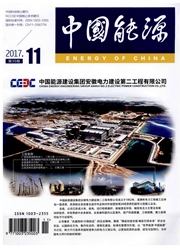

 中文摘要:
中文摘要:
近年来,随着经济不断发展和人民生活水平持续提高,中国能源贫困总体状况有所改善,但能源贫困区域差异仍较为明显,主要体现在东部地区与中西部地区的人均电力消费和人均生物质能消费的差距较大.影响中国能源贫困区域差异的主要因素包括地区经济发展水平、地区能源基础设施建设状况和教育普及程度等.因此,有必要从经济、基础设施投资、教育政策着手,进一步缩小区域差异,促进各地区能源消费和经济社会协调发展.
 英文摘要:
英文摘要:
In recent years, with booming economy and upgrading Chinese people's living standard, China's energy poverty has been remarkably alleviated. However, the difference in China's energy poverty among different regions is still obvious, which is symbolized by the difference in per capita consumption of electricity and biomass. The main factors that may affect the differences in China's regional energy poverty include regional development gaps, the differences in energy infrastructure constructions and the differences in education levels. As a result, in order to further reduce the differences in China's energy poverty among different regions and foster the balanced and harmonious development in economy and energy consumption, a series of sophisticated measures in the aspects of economy, infrastructure construction and education should be carried out.
 同期刊论文项目
同期刊论文项目
 同项目期刊论文
同项目期刊论文
 期刊信息
期刊信息
